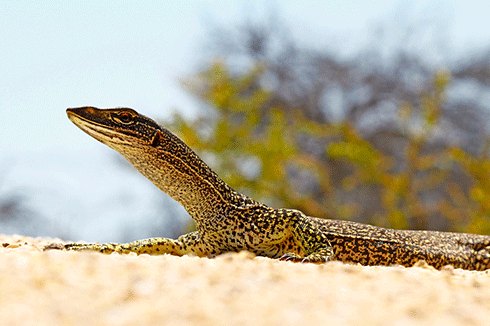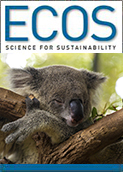
|
Published: 2 July 2014
Life-saving lesson: goannas taught to spurn the taste of toad
Researchers are investigating whether goannas can be taught to avoid eating cane toads – in an approach similar to previous studies involving native marsupials – in the remote east Kimberley, close to the invasion front of cane toads.
The study team comprises researchers from the University of Sydney and the WA Department of Parks and Wildlife, and the Balanggarra Rangers with support from the Kimberley Land Council.
Three of the five species of goannas found in the region are thought to be heavily impacted by toads. The team studied two of these species, the yellow spotted monitor (Varanus panoptes) and the sand goanna (Varanus gouldii), to learn more about their ecology.
The goannas are regularly radio-tracked and offered small non-lethal cane toads. The team found goannas that previously ate the small toads tended not eat them in subsequent trials.
This taste aversion training could prevent goannas from eating larger toads that could kill them when the main toad front arrives during the wet season later this year.
Cane toads entered the Kimberley region from the Northern Territory in 2009 and are moving at around 50 kilometres per year.
Earlier research has shown that the speed of their progress has increased as the species evolves. The invasion front is larger than previously thought, with faster, bigger toads evolving to have longer legs and moving up to eight months in front of the main pack.
The research is partly supported by the Australian Government’s National Environmental Research Program (NERP) Northern Australia Hub. The WA Government’s Kimberley Science and Conservation Strategy provides employment funds for Balanggarra rangers and the WA Department of Parks and Wildlife funds logistics, supplies and staff time.
Researchers say the Balanggarra Rangers have brought exceptional local knowledge and observational skills to the project – yet another example of western science working in tandem with indigenous knowledge.
Indeed, the Australian Centre for Ecological Analysis & Synthesis (ACEAS) has separately launched a new Indigenous Biocultural Knowledge website aimed at helping help decision-makers draw on indigenous knowledge for special and temporal information.
Source: NERP & ACEAS




